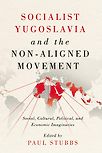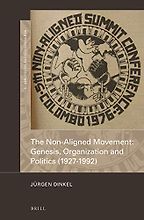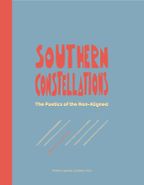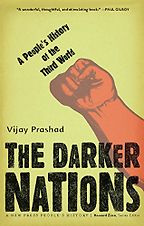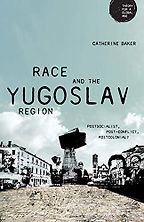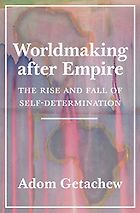Thank you for recommending these five books on the Non-Aligned Movement. To start us off: I’ve always understood the Non-Aligned Movement as being an association of primarily developing countries, largely socialist, that reached its apogee of influence during the Cold War. At that time it offered an alternative alliance to the United States and Nato on the one side, and the Soviet Union and the Warsaw Pact on the other. Yugoslavia played an important leading role within the organisation. Can you tell us more about how it started—why and when—and the extent to which my characterisation is accurate?
In formal terms, the Non-Aligned Movement started with the summit meeting in Belgrade in September 1961. They were still toying with what they should call it. ‘Non-Engaged’ was one option. And even that summit in Belgrade was not meant to be the start of a movement with regular summits. The only reason that Nehru came from India was because he was convinced that this would be a one-off event.
There was a second summit in Cairo in 1964, then an impasse of sorts until 1970. It was in Lusaka in 1970 where they started numbering these summit meetings. They called that the third one. And then, after that, they were pretty much regularly every three years, and still go on, in fact. So you’re absolutely right; it was born of those two global processes, one the Cold War, and the other the new decolonisation of what we now call the Global South. But you’re wrong in thinking that it was all socialist countries. Not at all. You had a whole range of countries whose only common denominator was that they did not want to be formally part of one of the two power blocs. They did not want to be part of the United States and Nato on the one hand, or the Soviet Union and the Warsaw Pact on the other. So you have Saudi Arabia as a member from the start and remaining as a member. You have Ethiopia, which was governed by an emperor. But you do also have India in its socialist moment and after its socialist moment. And you have those newly emerging African socialist states.
“For most of the 1960s, from the Cuban Missile Crisis onwards, you had periodic moments of real danger”
Yugoslavia was a prime mover. I would argue that it only really happened because in 1948 Yugoslavia’s Tito broke with Stalin and the Soviet Union. Yugoslavia realized that it was very isolated. Globally, it made approaches to the United States but didn’t want to be part of that block, for obvious reasons. It remained socialist. It failed to cement a Balkan Federation. It failed to cement really good links with the Italian or French Communist parties. And through the 1950s, as Tito felt more assured of his position at home, he travelled to Asia and Africa, in the ship, Galeb, which is now being restored and will soon be a kind of floating museum in Rijeka harbour. He caught the mood of the moment of de-colonialism.
The other rather lucky thing that happened was the Bandung Conference of Afro-Asian states in 1955. It was never repeated, partly because India and China had a border dispute and you couldn’t really have a Bandung process without both of those huge countries. So, in what would have been the Bandung process of Asia, Africa and later Latin America, socialist Yugoslavia was able to play a really interesting role in bringing them all together, as one of the small number of members of the Non-Aligned Movement from Europe—the other European states were Cyprus and Malta. So Yugoslavia steered the movement early on, along with India and Egypt, and then Ghana and Indonesia. And then, over time, depending on what was happening, different countries became the crucial nodes. But the crucial themes were the Cold War and de-colonisation.
What drove the agenda? Was it primarily security issues, or economics and trade or development?
It changed very much over time. In the 1960s there was very much a peace and security agenda. It was a political peace and security agenda with three elements to it. One was the real danger of a nuclear war and therefore the need for disarmament, total and complete disarmament and a nuclear test ban treaty. They wanted to get the superpowers to start talking to each other. And for most of the 1960s, from the Cuban Missile Crisis onwards, you had periodic moments of real danger. So, that disarmament agenda was really important. The second was the idea that small states, or states that did not want to be a part of the Cold War blocs, had the right to self-determination. They should have the right to choose their own political, social, and economic systems. That was also really important.
The third element, beautifully described by Amilcar Cabral in Cairo in 1964, was, if only the United Nations would be allowed to do what it was set out to do, the UN Charter was a wonderful idea. But the UN was, in Cabral’s terms, a giant with its hands tied behind its back. So the movement argued there was a need to free the UN to be the UN, for there to be less power vested in the Security Council, and no veto powers. Newly emerging independent de-colonised states should have a greater voice in the UN system. So those were the three elements in the 1960s.
As we got to the 1970s, there is more détente. There was a better relationship between the Soviet Union and the United States, and the Non-Aligned Movement turned very much to economic issues, the New International Economic Order. Colonialism may have ended, although the Portuguese colonies still existed. But the fight turned towards taking on neo-colonial economic relations. The terms of trade were dictated by the north and the west. And so producers of primary commodities were in a terrible position. The Non-Aligned Movement argued that a new consensus was needed that would challenge global economic inequality. And that’s what they did throughout the 1970s in a kind of developmentalist moment. Things moved. The political was never dropped, but the economic became much more important.
You mentioned that it still exists. What does it do now?
It talks, and it squabbles, really. Yugoslavia was thrown out of the movement in 1991. It still meets every three years but has no real relevance. There are just too many issues. There were always contentious bilateral issues from the very first conference, when there was a question of who would represent the Congo, because Patrice Lumumba had just been assassinated. There were border disputes, wars between member states, contentious issues around the Palestinians, and so on and so forth. But these were all moved to the side because there was a momentum with India, Yugoslavia, Algeria and some other countries taking things forward.
Get the weekly Five Books newsletter
But now it’s just become a talking shop that no one really listens to, and a place in which there are lots of disagreements. You could argue that it’s had no real relevance since the Cold War, although I’m writing several things which suggest that in the context of the war in Ukraine, many of the principles remain incredibly important.
How many countries were in it at its peak? And how many are left now?
Good question. It rapidly rose from 25 in Belgrade in 1961. By the time you got to Lusaka in 1970, the number of members was 53. By the time you got to Colombo in 1976, there were 86. Tito famously said to Haile Selassie in Lusaka: ‘half the UN is here’. That wasn’t quite true, but it became more than true a few years later, when there were over 100, I think. By sheer force of numbers it should be a really important grouping. But there’s always that tension: the more members you have, the more difficult to get real consensus and take real action.
The first book you’ve chosen to recommend is Jurgen Dinkel’s The Non-Aligned Movement: Genesis Organization and Politics. What story does this book tell?
This is the most sublimely comprehensive study of the Non-Aligned Movement up to the late 1980s—he says to 1992—and a wonderful book for two reasons. One is that he doesn’t rely on one single set of archives; he really goes to many different ones, all over the world. The Yugoslav archives are the most developed, but there are other archives—including German archives because, due to the separation between East and West Germany, the Non-Aligned Movement was being monitored by both sides. There are also Indian archives, the UN archives, and so on. It’s a beautifully thorough book in that sense.
The second reason that it’s really good is that it doesn’t start with Belgrade. It actually starts with the 1927 Brussels conference of the League Against Imperialism. Many of the leading figures were in exile in Paris, or in Vienna, and they met in Brussels. And then as the Bandung process in 1955, and then the Non-Aligned Movement carried on, many of them pointed out that they didn’t need to meet in Brussels anymore. They could meet in their own territories.
“There’s always that tension: the more members you have, the more difficult to get real consensus”
The way he sees the struggle against colonialism as a much longer one is absolutely wonderful. I’m writing a text now with another author about the Lusaka summit in 1970. And, sometimes, I think I’ve discovered something really new in the archives. And I go back and read what Juergen has written, and it’s there. So, a little bit of me hates him! But we’re in touch. It’s a great book that you can read once and then go back to. Over forty years earlier, Peter Willetts published his comprehensive study of the Non-Aligned Movement using data on voting patterns in the UN, for example. It was a pioneering book and I am delighted that Peter agreed to contribute a chapter to the collection I have edited. But Jurgen’s book takes the story much further.
The next book on our Non-Aligned Movement reading list is Bojana Piskur’s Southern Constellations: The Poetics of the Non-Aligned.
Yes, now I’m part of a project now led by Ljiljana Kolešnik, where we’re looking at cultural exchange in the Non-Aligned Movement. I’m the person who’s doing the political economy work, but these are mainly art historians or architects, who are looking at how the Non-Aligned Movement, both formally from above, but also, informally from below, created the possibilities for new kinds of exchanges between socialist Yugoslavia and what was called the Third World, or the Global South—through art, music, folklore, student exchanges, architecture, and so on.
This book is a beautiful catalogue, but it also has a series of academic essays on the traces that that this cultural exchange left behind. I was recently on the island of Korčula in Croatia. In 1968, 1970 and 1972, Korčula had three summer art colonies. And in one of them—I think the last one—a Cuban architect came with this amazing idea that was never realized: a hotel that would be this surrealist complex of a body. There would be a heart and brain that would go into the sea. And there was an idea to realize this as a project.
Five Books interviews are expensive to produce. If you're enjoying this interview, please support us by donating a small amount.
So there were extraordinarily interesting cultural exchanges, architectural exchanges. Bojana and Djordje Balmazović have, in my new edited book, a kind of pictorial essay where they look at some of these stories. Djordje does some beautiful drawings, which is in the spirit of popularizing cultural exchange. The comic book form was very important in Yugoslavia. So it’s a lovely book of an exhibition that started in Ljubljana, but it’s still travelling around and really worth looking at.
There are other books by Bojana Videkanić, who also writes in my book. She has a lovely book on socialist modernism, where she looks, amongst other themes, at the Ljubljana biennials as a source of cultural exchange. The issue for me is that a lot of Yugoslav formal and elitist understandings of culture had a very Western notion of modernity. But the Non-Aligned Movement and the things that the two Bojanas in my edited book refer to are ‘other modernities’ and they address the importance of those kinds of emerging art movements in the Global South.
Let’s go on to Vijay Prashad, The Dark Nations: A People’s History of the Third World. What story does this book tell?
This is one of my favourite books. Vijay is a prolific leftist author and has formed an institute called the Tricontinental Institute, which is really important. But this is, for me, the most important book that manages to grasp so many aspects of that moment of ‘coming to subjectivity’ of what we would now call the Global South, but what we called the Third World. It starts with a one liner which says: ‘The Third World was not a place. It was a project.’ And that’s what the book seeks to demonstrate. It goes through moments of the awakening and the subjugation of the Third World. Belgrade is just one short chapter in there and the Non-Aligned Movement is only one short piece in it, but it gives you a beautiful overview of the complexities of that moment of optimism in the Global South.
And what Vijay does brilliantly is trace the two contradictions, one internal and one external. The internal contradiction is that you have the moment of de-colonial state making, which is always about the popular rebellions of workers and peasants, and social movements, but also the local bourgeoisie, local elites and tribal leaders. And of course, you got compromises. And those compromises allowed for the possibility of independence, but they created difficulties for what kind of economic and social and political system you would have afterwards.
The second contradiction is not a so much a contradiction as a problem—structural inequality. The world was run by hegemons, including the United States. And in a sense, the moment there are claims from the Global South, you get the rise of the World Bank, the rise of the International Monetary Fund, and the rise of the General Agreement on Tariffs and Trade (GATT), which is much more neoliberal. And so you get absolutely new neo-colonial forms. The book is absolutely brilliant in terms of covering class, race and gender. The book beautifully looks at the gender, race and class dimensions of the decolonisation struggle. It’s really good and it’s beautifully written. You don’t have to be a scholar to read it. And there is a new edition coming out to celebrate the fifteenth anniversary of its first publication.
Specifically, how does he nest the Non-Aligned Movement within that broader picture of the story of the Global South in this book?
He argues—and I think he slightly overstates the case—that the Non-Aligned Movement was much more important rhetorically than practically. I think that is a plausible narrative. You see over time a great explosion in the volume of communications. At the first meeting in Belgrade, there was a 10-page statement. By the time you get to 1973 and 1976, you have several statements running to 40 or 50 pages.
But I know that Vijay has actually changed his mind. I think his view is that the Non-Aligned Movement was much more important than he gave it credit for then in that book. What he does in the book is argue, quite rightly, that the Partisan struggle in Yugoslavia during the Second World War was actually crucial to why Tito was so accepted by the leaders of the Global South. It may not have been a de-colonial struggle, but it was certainly anti-Fascist, and it was certainly anti-imperialist. And that Tito talked the talk that this was self-determination and standing up to the Soviet Union, was incredibly important.
Next up is Catherine Baker’s Race and the Yugoslav Region: Post-socialist, Post-conflict, Post-colonial. What does this book tell us about the Non-Aligned Movement?
This is about ‘race’ in the Yugoslav region, as its title indicates. It’s a critique of this narrative which says that there were no racialized politics in Yugoslavia, that Yugoslavia was situated in a region that was never colonial, that there were no issues around racial politics. What Catherine was the first to do was to take ideas that were not originally hers, that come from a global scholarship on racial formations, on the complexities of racial identifications, and apply them brilliantly to the case of Yugoslavia, even before socialist Yugoslavia.
The key term is ‘white, but not quite’. So, looking at identities situated between black identities, and hegemonic white identities. This is really important and complicated, the shifting racial politics of the Balkans. Maria Todorova’s book on Balkanism, Imagining the Balkans, where she applies Edward Said’s notion of Orientalism to the Balkans, points out in a footnote that ‘this is not about race’. Well, it’s not about race, if you see race in essentialist categories, but it’s absolutely about race, if you see race as culture, and hierarchies—whiteness, not-quite whiteness and various kinds of blackness. So what Catherine does beautifully is take that and apply it to so many different things.
In the Non-Aligned Movement, she talks about race blindness. There’s also the way in which black students come to Belgrade and are both allowed to be a voice in politics, but also get subjected to some racist abuse. You get some Yugoslav politicians who really understand Africa. You get others who are very racist about Africa. She also weaves in music. Some of her best work is on the Eurovision Song Contest. She finds obscure YouTube videos in which you have rappers from Serbia using tropes from some African music. It is an incredibly brilliant book. Catherine is doing more work now on Yugoslavia and Rijeka’s involvement in the sugar trade. So I’m looking forward to more on this and I actually want to work with a number of people on the racial politics of the Non-Aligned Movement because I’m not sure the Yugoslavs fully got this.
There were ideologies of Pan-Africanism, ideologies of Negritude, Black Power, you certainly have black Marxism. This really interests me Nkrumah, Nyerere, Kaunda, Senghor on Negritude. How far did these actually get into Yugoslav consciousness and politics? Not so much I fear. I talk about a de-racialized anti-racism because the Yugoslavs were very happy to pass resolutions condemning apartheid in South Africa and Rhodesia. But did they really see racial capitalism as a global force? I’m not sure. You can find speeches and phrases from Tito in which he seems to understand the racial dynamics. And then you’ve got others in which he says that it’s not just about race. It’s fascinating and Catherine captures a lot of this in a beautiful weaving of elements that are normally not brought together.
Let’s move on to our last book recommendation, Adom Getachew’s Worldmaking After Empire: the Rise and Fall of Self-determination. What story does this book tell?
Of all my five books, I think this mentions the Non-Aligned Movement the least. It may even be only in half a page. But, nevertheless, the book is really important to our discussion because what she does is develop this notion of what she calls ‘counter-hegemonic world making’. Now that might sound pretentious and academic, but actually, it’s profoundly important because she breaks away from the idea that there was one kind of globalization and that that was the dominance of neo-liberalism and that’s how the world was made.
What she does, largely through looking at the struggle for African self-determination, is argue that there are other prior ideas of how a world should look. So, the book is really criticizing the idea that this moment of de-colonial self-determination was essentially a nationalist moment. She argues beautifully that it was always internationalist and transnationalist, that it always had a sense that the nation state was important, but not the only important element of how you come to subjectivity on the world stage. She gives examples of pan-Africanism, particularly, but then the development of regionalism, the still current idea of a Caribbean unity, and the idea of the New International Economic Order.
And what she does beautifully is to link this to its intellectual antecedents. So, she looks at the way in which Michael Manley, and Julius Nyerere had a very different kind of set of economic understandings than even Nkrumah, the president of Ghana. The New International Economic Order was about a collective self-reliance. It’s a beautiful contradiction, a beautiful oxymoron. But when you bring it together, it means we can’t wait for a new global consensus, because that will never happen. We need to build a new world order, which is about us cooperating amongst ourselves, and determining that we actually are not going to be subordinate to Western rules of the game. The oil crisis made that both more possible and more difficult. It made it more possible because it showed what could happen if a group of commodity producers got together—you can change the terms of trade. At the same time, it happened with oil, but it didn’t happen with coffee or copper and so on. And suddenly, even within the Non-Aligned Movement, you have the oil producers getting richer and the oil consumers in the Non-Aligned Movement getting poorer.
Tito hoped that there would be an establishment of a Non-Aligned Bank. It never happened. When Yugoslavia was indebted, he hoped that the oil rich countries would bail them out, but that didn’t happen either. But what Adom’s book beautifully does is trace the intellectual histories, and the relevance of these intellectual histories to a politics of self-determination. For me it’s one of the most important books of the last five years. She really started looking at international law, but she’s gone into areas that are of importance in economics, and in terms of social welfare. She revisits the idea of whether you can have a global welfare state. It is such a rich and important book.
That’s it with the books, but before we finish are there any particular triumphs of the Non-Aligned Movement you can point to, things that it achieved in its heyday?
I’m a sociologist, not a historian, but I think that evaluating it in terms of success or failure is perhaps not the right way to go. But there are certain phrases I keep using—afterlives, legacies, really important principles that we keep having to return to—and some of those are around, like the right to self-determination. I think there’s also the idea—although it didn’t fully succeed—of what the UN could look like, if you let it reflect the world rather than superpower hegemony. I think there are some really important social and economic ideas. And there’s a real idea of what non-alignment from below could achieve in terms of those circuits of de-colonial affinity. It was much more than just a talking shop. It may have been successful only insofar as it forced the hegemons to get more serious about imposing their hegemony. In a way, the articulation of a different voice that did not want to become a bloc, but was critical of those two blocs, actually made the importance of instigating a new world order that was neo-liberal even more important for the global hegemons. But we can certainly go back to the Non-Aligned Movement in its heyday, which for me is the 1970s, and we can find ideas that can be used for progressive internationalism now.
Tell me about your book and what you were hoping to achieve with that? And what gaps were you filling?
When I started thinking about the book, and working with the Rosa Luxemburg Stiftung on bringing people together for a workshop, I was suddenly aware that there was a new group of people working on non-alignment, and particularly working on socialist Yugoslavia, or Yugoslavia in a global position. Because in the 1990s, and for much of the early 2000s, it was forgotten in public discourse, but also in academic discourse. So the idea was to make socialist Yugoslavia the centre of attention. Later, I wrote a text critical of Yugocentrism, you know, because we need other studies that don’t make Yugoslavia the centre. But it was very much the idea to bring together people that were looking at different themes. So, the book addresses the social, the political, the economic, and the cultural. We’re looking in different ways, using different genres, different styles, and coming to different conclusions.
It brings together 15 people of different generations, many from the region, but not all. And it tries to be greater than the sum of its parts. I keep saying: this was a collective, not just a collection. And I’m really rather pleased with how many of the themes in the book are now things that are spinning off for the authors, for myself, and for other people, and the growth of scholarship produced. The growth of interest in this is very important. It comes out at the latest in January 2023. And I’m hoping to use it very much as a dialogue to think about how we might see the Non-Aligned Movement from a number of very different angles.
Five Books aims to keep its book recommendations and interviews up to date. If you are the interviewee and would like to update your choice of books (or even just what you say about them) please email us at [email protected]

